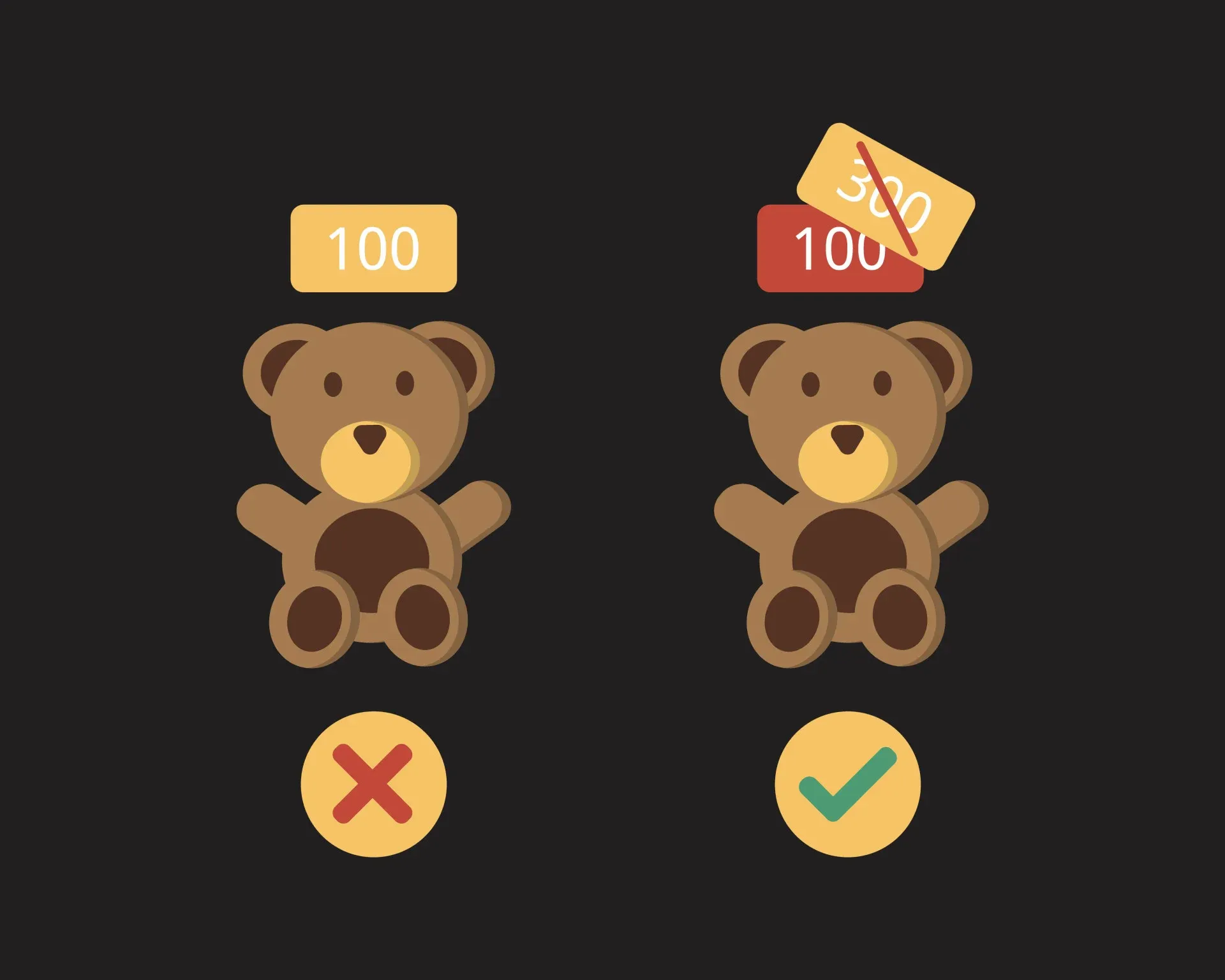Psych Friday: Unveiling the Anchoring Effect: The Surprising Power of Food Choices

When it comes to choosing what we eat, we often believe that our decisions are based on logic and careful thought. However, our choices are frequently influenced by cognitive biases, such as the anchoring effect.
This bias refers to our tendency to heavily rely on the first piece of information we encounter when making judgments or decisions. In the context of food choices, this can have a profound impact on our eating habits and overall nutritional well-being.
In this blog post, we will delve into the ways in which the anchoring effect affects our daily eating choices, providing detailed examples to help you relate, and offer practical strategies to make more conscious and healthful decisions.
Menu Pricing
How the Price Tag Shapes Our Perception Imagine you're at a restaurant, browsing through the menu. The first item catches your eye—it's high-priced. That initial price serves as an anchor that influences how you perceive the rest of the menu. Subsequently, you might be more inclined to choose other items that seem relatively cheaper in comparison. Unfortunately, this can lead us to opt for less healthy options or larger portion sizes without fully considering their nutritional impact. It's a subtle but powerful way in which the anchoring effect can sway our decisions, even without us realizing it.

Food Labels and Marketing
Deceptive Labels and Their Influence Have you ever fallen for the "50% less sugar" claim on a product? Food labels and marketing campaigns often employ the anchoring effect to sway consumer choices. When a product claims to have significantly less sugar compared to a similar one, the anchor of the original high-sugar product may lead us to perceive the reduced-sugar option as healthier or more beneficial.
Similarly, package sizes and portion recommendations can create anchors that influence our perception of appropriate serving sizes, leading us to consume more than necessary. It's important to be aware of these tactics and carefully evaluate nutritional information to make informed choices.

Social Influence
The Power of Those Around Us Eating choices are not solely influenced by our individual decision-making process but can be significantly impacted by social factors. Imagine you're dining with friends, and they opt for unhealthy or indulgent options. The choices made by our companions serve as anchors for our own decisions, making it challenging to stick to our initial intentions of eating healthfully. The anchoring effect in a social setting can create peer pressure and make it harder to maintain a nutritious eating pattern. Being mindful of this influence can help us resist the temptation and stay true to our health goals.
Environmental Cues
Setting Up for Success Our immediate surroundings play a crucial role in shaping our eating choices. The anchors present in our environment, such as the availability, accessibility, and visibility of certain foods, can strongly influence our decisions. For instance, if snacks or unhealthy foods are prominently displayed at eye level in our kitchen or workplace, they become the anchors that guide our snack choices, leading to impulsive and less nutritious selections. By organizing our environment to promote healthful choices—such as prominently displaying nutritious foods and keeping unhealthy snacks out of sight—we can counteract the anchoring effect and make it easier to choose wisely.
Overcoming the Anchoring Effect:
Strategies for Healthful Decisions
- Mindful Awareness: Recognize the Influence
The first step in overcoming the anchoring effect is to be aware of its presence. By recognizing the biases at play, we can consciously question the initial information presented to us and consider alternative options more thoughtfully. Pay attention to how the anchoring effect may be influencing your choices and take a moment to pause and reflect before making decisions. - Seek Multiple Perspectives: Explore and Evaluate
Rather than solely relying on the first piece of information we encounter, it is essential to seek out a broader range of perspectives and information before making food choices. This can involve reading multiple product labels, researching nutritional information, and consulting reliable sources to ensure a well-informed decision. By gathering more data, you can better assess the true nutritional value of the options available. - Plan and Prepare: Take Control of Your Choices
Taking proactive steps to plan and prepare meals in advance can help counteract the anchoring effect. By pre-determining your food choices and portion sizes, you can reduce the influence of impulsive anchors and ensure that healthier options are readily available. By taking control of your choices, you become less susceptible to external influences. - Create a Supportive Environment: Design for Success
Designing an environment that promotes healthful choices is crucial. Organize your kitchen to prominently display nutritious foods, making them the anchors that catch your attention. Keep unhealthy snacks out of sight or consider replacing them with healthier alternatives. Surround yourself with like-minded individuals who prioritize healthy eating, as their choices can positively influence your own.
The anchoring effect is a cognitive bias that significantly impacts our daily eating choices. By understanding this bias and implementing strategies to mitigate its influence, we can make more conscious and healthful decisions about the foods we consume.
Be mindful of the pricing strategies, deceptive food labels, social influences, and environmental cues that can sway your choices. By taking control, seeking alternative perspectives, planning ahead, and creating a supportive environment, you empower yourself to make better-informed decisions and maintain a healthful eating pattern that aligns with your goals.